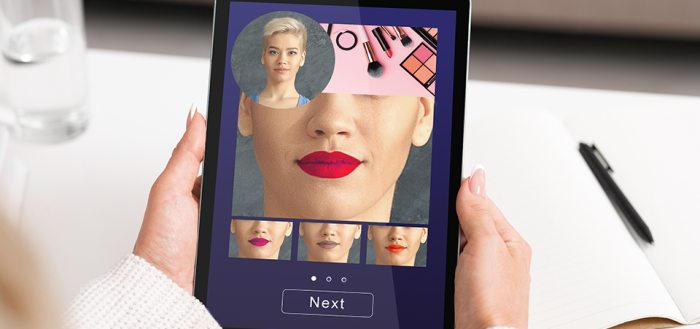10 Streaming Trends for 2023

2023 marks 30 years since the first live stream made its way across the internet. Since its debut, streaming has become integral to everyday life. Leisure time is spent consuming videos on platforms like YouTube and Netflix. Business is conducted using video conferencing technologies like Zoom. And IoT streaming powers everything from autonomous robots to baby monitors.
The proliferation of video across so many applications can be attributed to ever-expanding connectivity and technological innovation. In this article, I explore some of the most exciting developments in the streaming world — including artificial intelligence, new monetization tactics, and immersive extended reality (XR) experiences.
This year’s list admittedly echoes predictions I’ve made before. The reason for this is simple: Digital advancement is an ongoing evolution, always building upon itself.
So, let’s get started. Here’s my list of streaming trends for 2023.
Top 10 Streaming Trends for 2023
- Artificial Intelligence (AI) for Dynamic Content Creation
- Free Ad-Supported (FAST) Television
- New OTT Monetization Models
- Immersive Video Experiences and the Metaverse
- Advancements in Streaming Speeds and Feeds
- Improvements in Connectivity: ATSC 3.0 and 5G
- Omnichannel Video Marketing
- Market Consolidation
- Blockchain and Non-Fungible Tokens (NFTs)
- The Greening of Streaming
1. Artificial Intelligence (AI) for Dynamic Content Creation
Whether you’re a digital marketer or a software developer, chances are you’ve been pondering artificial intelligence (AI) in 2023. ChatGPT made a huge splash at the end of last year, with applications ranging from blog creation to code development.
For those of you living under a rock, ChatGPT is a natural language AI chatbot trained using an open-source dataset. Think of it as a digital Magic 8 Ball — but rather than being constrained to “yes” or “no” questions, you can ask it almost anything you’d like.
One of my colleagues asked it to write a blog for publication on wowza.com titled Streaming Trends for 2023. The results weren’t jaw-dropping (looks like I’m stuck writing this blog after all), but there’s a good reason for this. The tool stopped learning in 2021, so it’s limited in making predictions about the technology landscape two years in its own future.
That said, it can still accomplish impressive tasks. Check out this next prompt, where my colleague asked it to write a commercial script.

OpenAI, the company that developed ChatGPT, also offers an art tool called DALL-E 2 that creates realistic images from text prompts. We asked it to provide an image of “the frustrated software developer working at a computer screen with lines of code scrolling by” described in ChatGPT’s script and got the following:

Again, not great. But still compelling evidence of AI’s ability to dynamically create written and visual material based on specific prompts.
Will content marketing teams swap out their writers and graphic designers for OpenAI’s tools? Not a chance. But there’s opportunity to leverage AI for jumpstarting projects, scaling content creation, and generating personalized advertising on the fly.
As Kevin Kelly, the founding executive editor of Wired magazine, explains:
“This is a team sport: The human artist and the machine artist are a duet. And it requires not just experience but also lots of hours and work to produce something useful… It is very easy to get the AI to surprise you. (And that is often all we ask of it.) But it is very difficult to get the AI to obey you.”
In the world of streaming, AI-driven content creation is everywhere:
- News: Linear broadcasting companies like Defiance Media are creating AI-generated news content.
- Sports: Online sports media outlet Ran.de is using virtual humans to host soccer coverage.
- Hollywood: AI-generated motion pictures are on the horizon.
- Enterprise: Tools like DeepBrain’s AI Studios and D-ID’s Speaking Portrait automate the creation of taking heads videos for training, personalized messages to customers, product marketing materials, and more.
Another likely application for AI content creation is TV commercials, which brings me to the next streaming trend.
2. Free Ad-Supported (FAST) Television

The first U.S. TV ad aired in 1941, and televisions became a common household item in the 1950s. For more than half a century, families gathered around their living room set to consume scheduled programming and commercials in a linear format.
Then, in 2007, Netflix disrupted the industry by launching direct-to-consumer streaming following a subscription video on demand (SVOD) model. Rather than having to watch whatever the TV Guide had slotted for a given time, viewers gained the freedom to stream content at their convenience. The subscription-based format also allowed content distributors to move away from commercials.
In 2023, everything old is new again, and free ad-supported (FAST) TV is back. This combination of streaming and traditional linear broadcasting delivers channels at no cost to cord-cutters. Viewers get access to free content, and broadcasters can monetize their programming with commercials. Top players in the FAST space include Roku, Pluto TV, and Peacock. Roku has even announced plans to build their own connected TVs this year.
Why the return? Streaming fatigue, for one. With so many platforms vying for our attention, viewers are sick of having to pay for ten different services. There’s also plain-old decision fatigue at play. Sometimes, at the end of a long day, turning on a linear channel is simpler than sorting through countless titles.
While the growth of FAST is undeniable, many early adopters have found a new source of frustration: lacking commercial content. It’s not uncommon to see the same TV ad play several times in a short period of time, or to encounter a static screen stating, “you’re watching a commercial break.”
This is one way that the first trend I covered (AI for dynamic content creation) could play a role by assisting with simple, dynamic commercial creation.
3. New OTT Monetization Models
Let’s slow down and spell out all the major monetization models for over-the-top (OTT) streaming providers.
- Subscription-based video on demand (SVOD): Any VOD service that provides unlimited access to content for a recurring fee is referred to as SVOD. This gives viewers the ability to watch high-quality content, free of commercial interruptions, and independent of any programming schedule. Top SVOD providers include Netflix and Disney Plus.
- Ad-based video on demand (AVOD): AVOD uses commercials and other advertising techniques to generate revenue. Unlike FAST, this model still allows viewers to watch on-demand content rather than linear channels. AVOD is dominant across the Asia-Pacific region and currently growing in the U.S.
- Free ad-supported TV (FAST): As described above, FAST looks much more like traditional TV broadcasting. This model combines advertising with scheduled programming to stream free content on a one-to-many basis.
- Transactional video on demand (TVOD): TVOD describes pay-per-view content that viewers purchase on an ad-hoc basis. Cinematic releases that go direct to VOD and premium live content that’s available behind a paywall both leverage this model.
- Hybrid monetization: Most broadcasters use a combination of tactics and don’t fit in one category. For example, Amazon Prime offers a SVOD plan, an AVOD plan, and allows consumers to rent or purchase content à la TVOD. Likewise, Netflix recently added an ad-supported tier for subscribers who pay a lower price.
Beyond these traditional monetization models, I predict that 2023 will bring even more creative opportunities for turning content into cash. For instance, Amazon Inspire creates shoppable feeds from influencer’s photo and video content. Viewers can buy the very product an influencer is wearing with the touch of a button. This could be a stepping stone to Amazon implementing in-app purchases to their own Prime content in a similar fashion.
Likewise, there’s opportunity for the NFL to leverage their distribution on Amazon Prime for innovative revenue models. Amazon now controls rights to Thursday Night Football, one of the last bastions of traditional TV. So what’s stopping the NFL from leveraging the technology built into Amazon’s gaming platform Twitch to support betting overlays and other interactive features within the primary broadcast? Beyond SVOD, AVOD, and TVOD, in-game betting would be a logical next step for sports broadcasting monetization.

4. Immersive Video Experiences and the Metaverse
Mark Zuckerberg bet big on the metaverse last year and then Meta lost $700 billion in market value. That’s not to say that a more immersive internet doesn’t await us, though.
Celia Pearce, a professor of game design at Northeastern, gives her take:
“[Meta] really missed the mark in terms of creating something for the right audience. They’ve also missed the mark in terms of understanding where the industry is, both in terms of what people expect visually from games and what people are actually doing in non-game experiences, which is making stuff. Creativity is the killer app in virtual worlds.”
Despite Zuckerberg’s public disaster, research firm Gartner anticipates that 25% of the population will spend at least an hour a day participating in a metaverse for work, education, shopping, entertainment, or other reasons by 2026.
The metaverse will eventually take the shape as a world unto itself that merges the physical and digital using augmented reality (AR), virtual reality (VR), and — of course — video technology. But companies investing in it must play the long game. The content, hardware, and very concept is still being built — even though the term metaverse was itself coined more than 30 years ago.
AR has caught on at a quicker pace than VR, with examples ranging from Pokémon GO to AR filters on Instagram. This comes down to the proliferation of content and hardware. Whereas AR superimposes digital objects into the viewer’s real-life environment, VR requires a wholly new digital environment. For this reason, VR worlds are much more costly and involved to bring to life. Likewise, everyone has a smartphone in their pocket, whereas VR headsets are less common.

Some of the leading organizations getting the metaverse right include Minecraft, Roblox, Unreal Engine, and Decentraland. Everyone is also waiting to get their hands on Apple’s VR headset (set to launch this spring), which will undoubtedly push VR and metaverse tech into the future.
5. Advancements in Streaming Speeds and Feeds
Video latency remains one of the largest obstacles to building the immersive video-enabled world described above. Minimizing lag is also critical to live sports betting, telesurgery, IoT devices, and a host of other applications.
Because latency is tied to the delivery technologies used to transport a stream across the internet, here’s a pulse check on how the industry’s advancing in 2023:
- Protocols: Low-Latency HLS and Low-Latency CMAF for DASH used to be the sweethearts of the industry. But at sub-three-second delivery, they just don’t cut it for use cases that require real-time interactivity. Many organizations are opting to either go all-in on real-time video delivery or stick with the six-second delivery time supported by tuned HLS and DASH. For this reason, Web Real-Time Communications (WebRTC) has emerged as the most promising technology for interactive streaming. The sub-second protocol supports near-simultaneous exchange of data, thus replicating in-person interactions in a way that Low-Latency HLS and Low-Latency CMAF for DASH simply can’t. A fourth option worth mentioning is the High Efficiency Streaming Protocol (HESP). Developed by THEO technologies for ultra-low latency streaming, it aims to achieve sub-second streaming over existing HTTP infrastructure.
- Content Delivery Network (CDN) Scaling: Another goal of video delivery that’s often at odds with low latency is scalability. That’s because protocols like WebRTC were designed for small video chat environments rather than one-to-many broadcasts. Content distributors are overcoming this with innovative approaches to CDN scaling. Wowza’s Real-Time Streaming at Scale feature, for instance, deploys WebRTC across a custom video CDN to support video delivery to a million viewers. Multi-CDN usage is also on the rise, allowing content providers to share traffic across multiple internet service providers (ISP) and thus minimize the weaknesses of each.
- Video Codecs: Video codecs also influence the speed of video delivery by determining how quickly a stream is encoded and which protocols support it. H.265/HEVC and AV1 are growing codecs for standard latency live and on-demand streaming content, but not the best route for real-time streaming. Rather, many content distributors plan to stick with good old H.264 for their interactive video applications.
6. Improvements in Connectivity: ATSC 3.0 and 5G

Free over-the-air 4K broadcasting is now a thing, thanks to a tech called ATSC 3.0. Branded as NextGen TV, this digital broadcast model supports high-dynamic range digital streaming everywhere in the U.S. Simply throw an antenna on your TV and enjoy access to ABS, CBS, and other major networks. Beyond just TV, ATSC 3.0 could possibly be used to provide internet to areas without access to traditional broadband. In this way, it’s lauded for the ways it can democratize connectivity — much like 5G.
In the 5G realm, we’re continuing to see advancement as support shows up in devices other than phones. Encoders, smart TVs, gaming consoles like Switch, and VR headsets can now tap into its power. What does this mean? We might be able to start streaming live content on our smart TVs while driving an RV cross country. Likewise, VR, advanced AI, and widespread IoT can all go mobile with 5G.
7. Omnichannel Video Marketing

Omnichannel marketing involves delivering a seamless customer experience across every touchpoint — including your website, app, social media channels, email, SMS, and more. Many brands are relying on video to do just that, thereby gratifying customers every time they interact with them.
Consider Ulta Beauty. The cosmetic brand hosts a video podcast on Facebook and YouTube, broadcasts live makeup masterclasses via their website, and has partnered with live streaming beauty app Supergreat to announce product drops and engage with a community of makeup enthusiasts.
That’s only the start. From there, the Ulta Beauty app lets customers virtually try on products using AR or get curated product selections via AI-powered skin analysis. The retailer also offers personalized video chats with gift advisors and additional innovative virtual experiences across their many digital properties.
In 2023, marketers should look at this model to inspire their business strategy.
Executing on omnichannel video marketing successfully is just as much about the creative behind it as it is about the software solutions that make it possible. Ben Kartzman, COO at Mediaocean, weighs in:
“As budgets tighten and marketers and their agencies are asked to do more with less, it will become critical for advertisers to extend creative assets across publishers and platforms. Brands will still need to be present across all social channels as well as video and display, and they will need software to help them automate creative that can be deployed efficiently across different publishers. Furthermore, the creative will need to feel like it’s been purpose-built for the channel it’s running in. Ad tech will play a critical role in enabling this by allowing marketers to follow the old mantra Sun Microsystems developed for Java of write once, run anywhere where a piece of creative can be created once, run everywhere.”
8. Market Consolidation

Over the past few years, the streaming wars have caused fragmentation. But the battle for subscribers came to a head in 2022, with sign-ups on the decline and viewers moving to alternative consumption models (see trends 1, 2, and 6 above).
The growth of Netflix’s global subscriber base was already slowing down at this time last year. Two rounds of layoffs followed — and the same played out for many companies across the streaming and tech sectors. As a result, consolidation will be the name of the game in 2023 and beyond.
In 2022, we saw the following acquisitions in the streaming industry:
- Disney bought out MLB’s remaining stake in BamTech for $900M
- Warner Brothers finalized their merger with Discovery
- Amagi acquired Streamwise
- Telestream acquired Encoding.com
- Dolby acquired Millicast
- Limelight Networks acquired Yahoo’s Edgecast
- Wowza acquired Flowplayer
- 3Play Media Acquired Captionmax
- Enghouse Systems acquired Qumu for $18M
I predict that the trend of enterprises combining complimentary offerings will continue throughout 2023.
9. Blockchain and Non-Fungible Tokens (NFTs)

When I say NFTs and blockchain, most readers think of digital currency. The concepts are all tied, but the impact of NFTs on the streaming industry has a lot more to do with decentralized business models than risky investment opportunities.
Just as traditional wealth can be measured in terms of both cold hard cash and one-of-a-kind assets (think art and collectibles), digital wealth can be measured in terms of cryptocurrency and NFTs. NFTs act as digital certificates of purchased assets, much like a title to a car.
As a digital ledger technology, they promise to democratize how video content is exchanged by enabling direct monetization rather than reliance on third-party intermediaries like YouTube. Both individual creators and enterprises can benefit from NFTs. For instance, they can function as tickets to events, contractual agreements that provide royalties, and even safeguards to private information.
By putting monetization and copyright control into the hands of individual owners, could NFTs revolutionize streaming distribution?
10. The Greening of Streaming

The greening of streaming describes the increased awareness of the energy requirements associated with video distribution. Because video now accounts for 80% of all internet traffic, identifying ways to curb wasteful practices and improve efficiencies makes a lot of sense. What’s more, the greening of streaming often leads to cost savings for content distributors, so it’s a win-win.
In 2023, video developers are paying closer attention to opportunities for decreasing energy consumption across the video delivery ecosystem. Here, video analytics can provide essential insight into carbon footprint estimation per streaming session, display resolution, screen brightness, selecting the optimal codecs, and more.
Conclusion
There you have it — my 10 predictions for the streaming industry in 2023. I’ll be diving deeper into all of these topics throughout the year, so don’t forget to subscribe the the Wowza blog.




